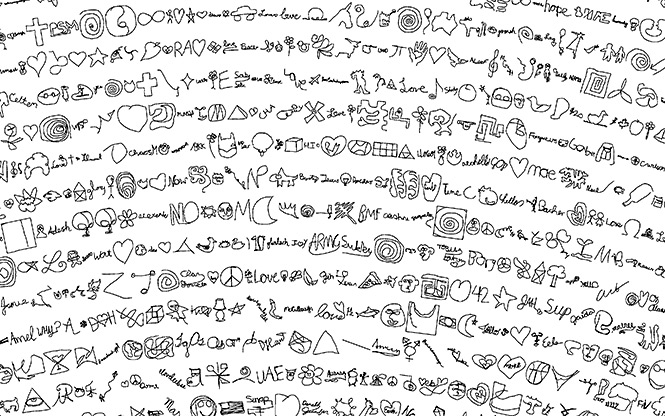Printed from www.flong.com
Contents © 2020 Golan Levin and Collaborators
Golan Levin and Collaborators
Projects
Sort by : Author | Date | Name | Type
- Installations
- Ghost Pole Propagator II
- Augmented Hand Series
- Eyeshine
- Re:FACE, Anchorage Version
- Merce's Isosurface
- Double-Taker (Snout)
- Opto-Isolator
- Eyecode
- Interstitial Fragment Processor
- Reface [Portrait Sequencer]
- Ghost Pole Propagator
- Footfalls
- Scrapple (Installation)
- The Manual Input Workstation
- Interactive Bar Tables
- Messa di Voce (Installation)
- Hidden Worlds of Noise and Voice
- Re:MARK
- Introspection Machine
- Audiovisual Environment Suite
- Dakadaka
- Rouen Revisited
- Performances
- Ursonography
- Scrapple (Performance)
- The Manual Input Sessions
- Messa di Voce (Performance)
- Dialtones (A Telesymphony)
- Scribble
- Net.Artworks
- Terrapattern
- Moon Drawings
- Free Universal Construction Kit
- QR Codes for Digital Nomads
- The Dumpster
- Axis
- JJ (Empathic Network Visualization)
- The Secret Lives of Numbers
- Alphabet Synthesis Machine
- Obzok
- Sketches
- Stria
- Dendron
- Slamps
- Banded Clock
- Floccus
- Stripe
- Meshy
- Directrix
- Yellowtail
- Streamer
- Blebs
- Self-Adherence (for Written Images)
- Poster design for Maeda lecture
- The Role of Relative Velocity
- Segmentation and Symptom
- Floccular Portraits
- Curatorial
- Mobile Art && Code
- ART AND CODE
- Code, Form, Space
- IEEE InfoVis 2008 Art Exhibition
- Solo exhibition at bitforms gallery
- IEEE InfoVis 2007 Art Exhibition
- Signal Operators
- Commercial / Industrial
- Motion Traces [A1 Corridor]
- Civic Exchange Prototype
- Amore Pacific Display
- Interactive Logographs
- Interval Projects
- Media Streams Icons
- Miscellaneous
- NeoLucida
- Rectified Flowers
- GML Experiments
- New Year Cards
- Admitulator
- Glharf (or Glarf)
- Finger Spies
Moon Drawings
2015 | Golan Levin, David Newbury, and the CMU Moon Arts Group
Moon Drawings is a project to extend the reach of artistic expression to the Moon. Using a tool on the Moon Drawings web site, nearly nine thousand people contributed single-line drawings to an online database: a collection of communications that ranged from whimsical doodles and personal signatures to symbols of hope, solemn wishes and eternal visual forms. Micro-etched onto a sapphire disc, and set into a sculpture called the Moon Arts Ark, these drawings were shuttled to the Moon aboard a robotic lander/rover in January 2024 by our partners at Astrobotic Technology and the CMU Planetary Robotics Lab. These "gifts for the moon" will remain there for potentially millions of years: a poetic gesture reaching out, far beyond any objective existence on Earth.

Moon Drawings proposes a creative and participatory way of establishing a link between the Earth and Moon, advancing the presence of human culture in space, and realizing new opportunities for art and exploration. In doing so, we hope to reawaken the sense of sublime wonder fundamental to our relationship with the Cosmos, and open a dialogue about our place in the universe.
The Moon Ark by CMU Moon Arts Group on Vimeo.
The Moon Drawings project is an effort of the Moon Arts Group, an initiative at Carnegie Mellon University to extend the reach of artistic expression to the Moon. During the first week of May, 2015, we invited people online to contribute a single-line drawing to this project, using a custom online drawing interface. The resulting collection of nearly nine thousand drawings were micro-etched onto a pair of sapphire discs, alongside other discs and media which comprise the Moon Arkem>. One disc of drawings will remain on Earth, while the other will be sent to the Moon aboard the Astrobotic/CMU Andy rover. The Earthbound disc will be featured in a traveling exhibition.
We cannot speculate when, if, or by whom the disc on the Moon will be seen again. What we can state with some certainty is that, if the rover completes its journey safely, the disc is expected to remain legible for tens or perhaps thousands of years. Likewise, because there is no lunar weather, the drawings rendered into the Moon's soil by the rover's tracks are expected to last millennia; depending on their scale, they may be visible to orbiting telescopes.
Our Ride: Andy, the Astrobotic/CMU Lunar Rover
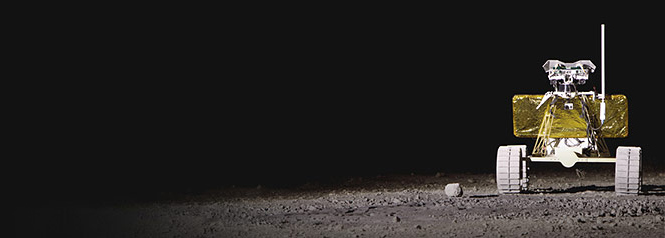
Andy is a Moon rover being built in a lab at Carnegie Mellon University. Its mission is to explore a pit in the Lacus Mortis region on the Moon. Andy is also a competitor in the Google Lunar XPrize competition. The rover's creators, the CMU Planetary Robotics Lab and Astrobotic Technology, have invited us to create artworks to accompany this mission. To support this, they have generously granted us 6 ounces (170g) of payload—valued at nearly $1M per kilogram—to the Moon. It is in this payload that we will transport the Moon Drawings disc, and its vessel, the Moon Arts Ark.
Our Payload: The Moon Arts Ark
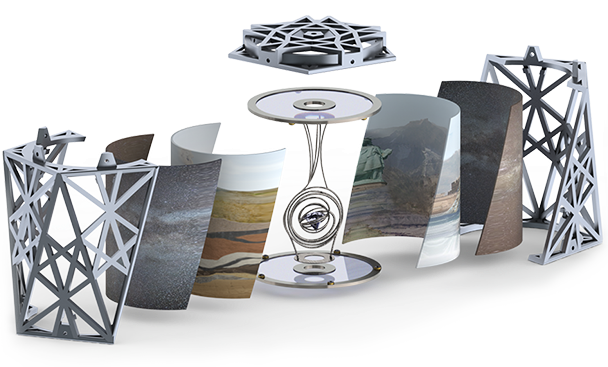
Our payload aboard the Astrobotic/CMU mission is the Moon Arts Ark: a view of life on Earth, and a "gift for the Moon". Designed by renowned space artist, Lowry Burgess, in collaboration with the Moon Arts Group (an international team of artists, designers, scientists, and engineers), the Ark contains elements representing all the arts and humanities, and engages through its form some of the most advanced sciences, engineering, and fabrication techniques. The Ark has four titanium chambers that each hold two engraved sapphire discs, as well as precious metal sculptures, microcapsules containing evidence of life on earth, high resolution imagery on metal foil, and a variety of other information. The Ark is designed to provide a view of humanity through both historical and contemporary lenses, endure the quarter-million-mile trek to the Moon, survive the descent to the lunar surface, and endure for millennia thereafter.
The Moon Drawings Disc
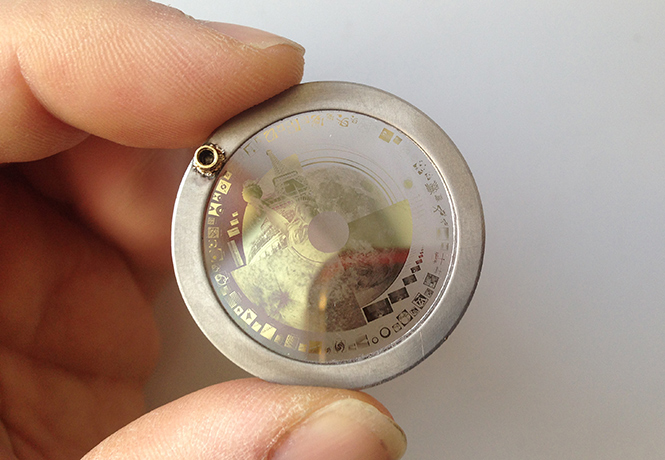
A micro-etched disk from the Moon Ark, similar to the Moon Drawings disc.
The drawings contributed to the Moon Drawings website were micro-etched into a 39mm sapphire disc, similar to the test sample shown above, which can store more than 10,000 drawings. The imaging process, developed by French company Arnano for storing large amounts of data in an archivally stable format, uses a laser to etch away a metal coating on a sapphire disc. According to Arnano, a 50-nanometer layer of titanium nitride is first sputtered (deposited) onto the sapphire disc. An ultraviolet laser then selectively removes portions of this metal film, using an optical engraving process with 2-micron precision. The effective resolution of the resulting image exceeds 12,000 dpi.

The Moon Drawings disc graphic, showing the nearly 9000 submitted drawings.

The Moon Drawings disc, as viewed in a Wentzoscope microscope.
Tracings in the Lunar Soil

Artist's rendering of how a traced drawing might appear in the Moon's soil.
If circumstances allow it, a small number of drawings from the Moon Drawings collection will be inscribed by the tracks of the Andy rover into the surface of the Moon. Because there is no weather on the Moon, these large drawings are likely to last for thousands of years. These drawings will be selected from the collection by an international jury of distinguished artists, scientists, curators and philosophers. The rendering above, by Pablo Garcia, is a simulation of how these drawings might appear. Many unknown factors—such as the Rover's power levels, operational condition, and local ground safety—will determine whether or not it is possible to execute these tracings. If we make it this far, however, it is likely that the drawings traced by the rover would be visible from orbiting telescopes near the Moon, such as NASA's Lunar Reconnaissance Orbiter (LRO), which captured satellite images of the Apollo 12, 14 and 17 landing sites.
Exhibitions and Press
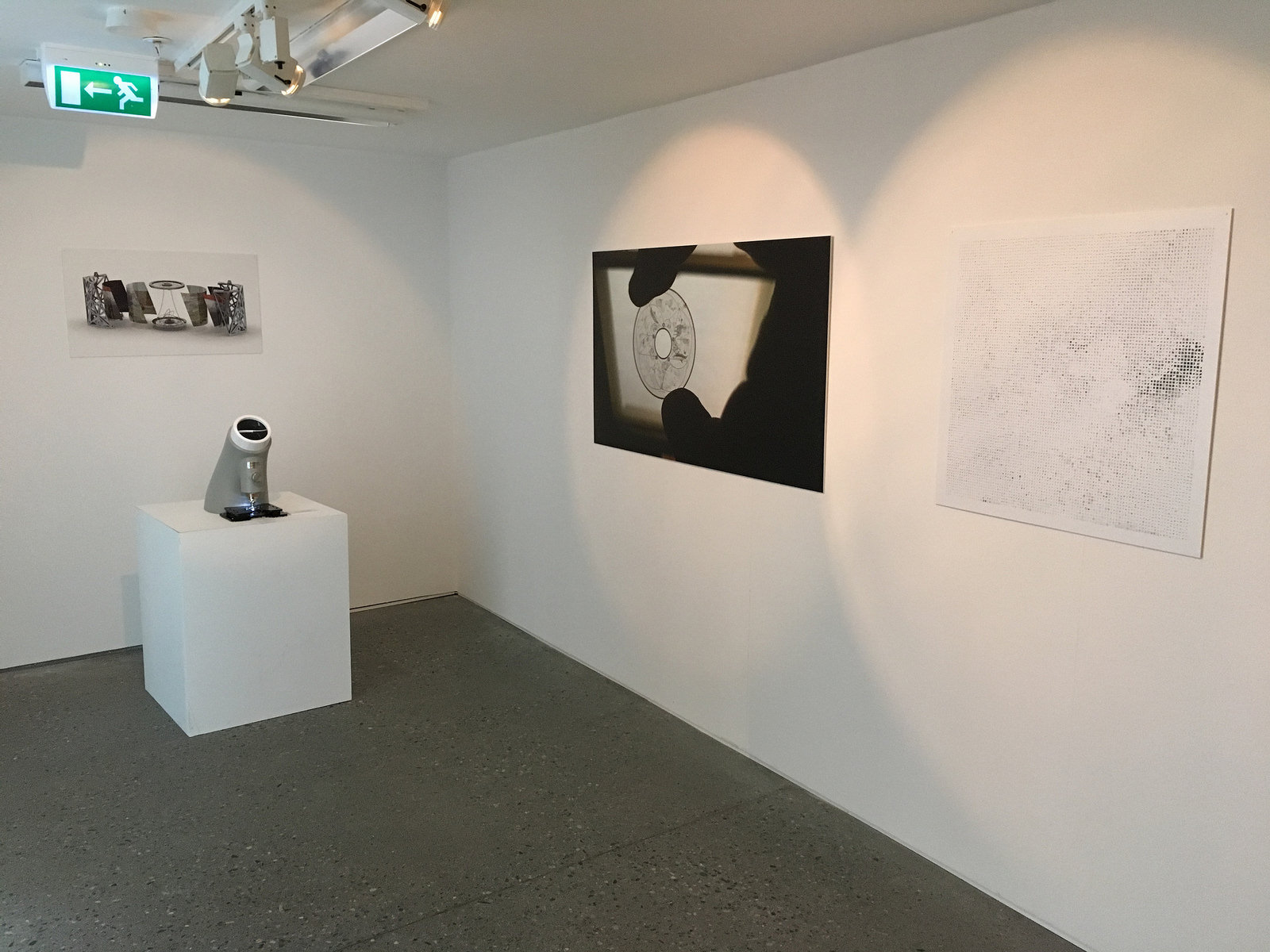
The Moon Drawings disc, exhibited at the Trondheim Biennale for Art and Technology, 2016.
Moon Drawings has been presented in: Meta.Morf 2016: Nice to Be in Orbit!, the Trondheim Biennale for Art and Technology, Trondheim, Norway, 3/10/2016 - 5/8/2016.
Moon Drawings has also been featured in the following publications:
- Brack, Jeb. "9,000 Sketches to be Immortalized on the Moon". PSFK, 6/22/2015.
- Manilève, Vincent. "Attention, dernier jour pour envoyer votre dessin sur la Lune". Slate.fr, 5/7/2015.
- Quito, Anne. "Today is the last chance to send your drawing to the moon". Quartz, 5/7/2015.
- Republica. "La historia se repite: vamos a mandar un pene a la Luna por segunda vez". 5/11/2015.
- Stinson, Liz. "We Sent a Dick Pic to the Moon—And We’re Doing It Again". WIRED, 5/7/2015.
- Walasek, Dobromila. "Malen Sie den Mann in den Mond". Zeit Online, 5/6/2015.
Credits and Media
Moon Drawings was developed by Golan Levin & David Newbury at the The Frank-Ratchye STUDIO for Creative Inquiry, in association with CMU Moon Arts Group and the CMU Planetary Robotics Lab. ©2015 Carnegie Mellon University. Complete information about the project can be found at moondrawings.org and moonarts.org. High-resolution images of the project can be found in this Flickr archive.

A social media response by a Moon Drawings contributor.
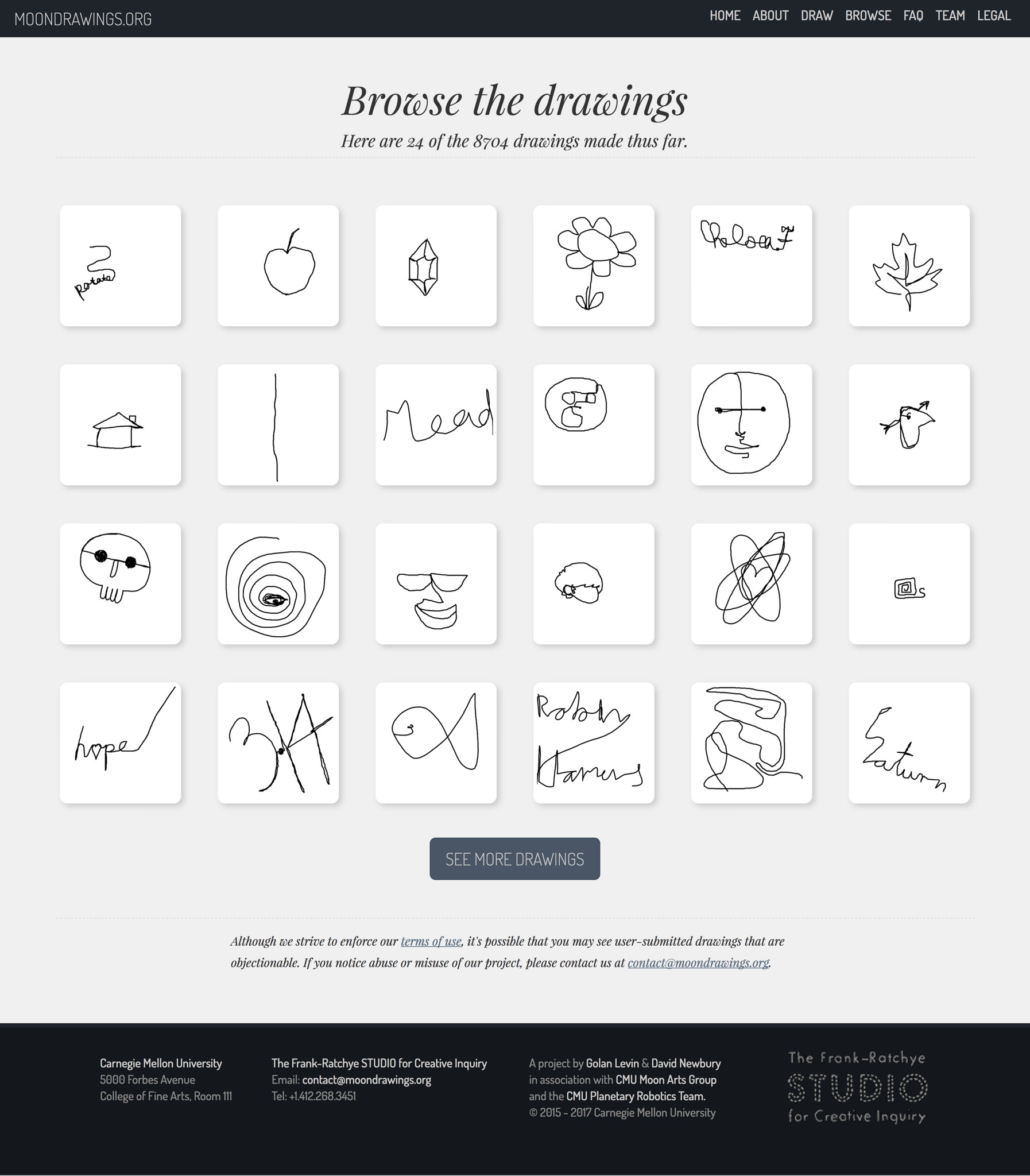
Screenshot of the Moon Drawings website.
